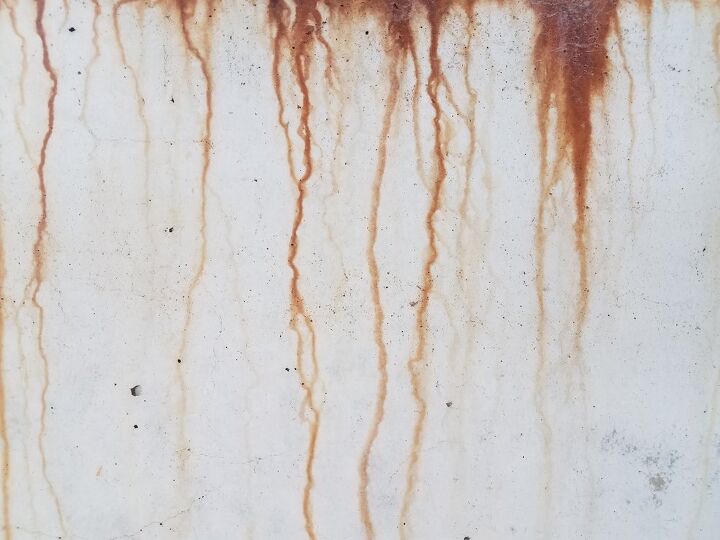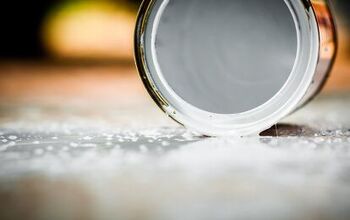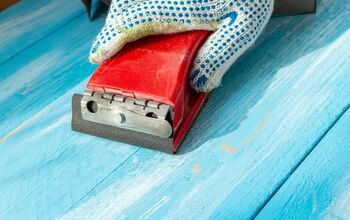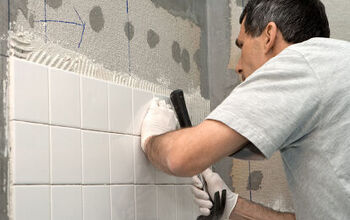Will CLR Remove Rust From Concrete? (Find Out Now!)

CLR, short for Calcium Lime Rust, is a cleaning product that is known for its ability to get rid of tough stains, typically those in the bathroom and kitchen. It can get rid of rust build-up on all kinds of surfaces, including stainless steel fixtures, ceramic toilet bowls, bathtubs, and surfaces. Can it get rid of stains on concrete?
CLR can usually remove all lingering traces of rust on concrete. It is safe to use when applied as directed. However, you should not apply CLR to concrete that has been tinted, colored, stamped, coated, or sealed in any way. CLR should also not be used on concrete that was poured within the last year.
Because CLR removes calcium, there is always a risk of affecting the pigment and discoloring your concrete. It’s smart to do a spot test on a small area first before using it on any surface, including concrete, to make sure it won’t affect the rest of the space.
Do You Need Concrete, Brick, or Stone Pros?
Get free, zero-commitment quotes from pro contractors near you.

Will CLR Remove Rust From Concrete?
CLR is a cleaning solution that contains several acids yet is safe enough for home use. It includes ingredients such as lauramine oxide, tripropylene glycol n-butyl ether, lactic acid, gluconic acid, water, and various colorants.
CLR is generally effective at removing rust, lime, and even calcium from concrete. However, you should always test it in a smaller area first.
Because concrete is naturally made of calcium, you do run the risk of slight discoloration when using a calcium remover like CLR. This does not always happen but is more likely on surfaces that have been colored, tinted, stamped, coated, or sealed, or that which was applied in the last year.
How Do You Use CLR on Rust on Concrete?
You can use CLR to get rid of rust on concrete, but before you do, it’s a good idea to spot-check first. This will allow you to get an idea of whether the CLR will discolor your surface before applying it to a larger area.
To do this, combine equal parts of warm water and CLR, doing so in an area that is open and ventilated.
Use this small amount of solution on a discreet area of the surface you want to clean (such as a piece of floor that will be beneath a cabinet or piece of furniture).
Keep the solution on the rust stain for two minutes. Then, rinse it with cool water. Allow it to dry overnight. If there are no signs of discoloration and the CLR seems to have done its job, you can safely use CLR on the concrete surface.
To use CLR on the larger area, you’ll do exactly what you did in the spot test, but at a larger scale. Combine equal parts of CLR and water, then apply the mixture generously to the rust stain. Allow it to sit for two minutes, rinse, and repeat if the stain did not go away.
Don’t let the CLR stay on the stain for longer than two minutes, even if the rust hasn’t completely disappeared yet. CLR Is extremely acidic and can etch or discolor surfaces when left on it for too long.
What is the Best Rust Remover for Concrete?
CLR is a good option when it comes to removing rust from concrete, but it’s not the only choice you have. You can also use materials like specialized concrete rust remover products like RustAid or Krud Kutter.
These products are specifically formulated to remove concrete rust stains without damaging the concrete flooring below. If you use them, be sure to wear protective gear like goggles and gloves, since these chemical treatments are quite powerful.
Another option is to use WD-40 Multi-Use. This is a penetrant so it works quickly by removing rust from the bottom up instead of just at the surface level.
Avoid using bleach or even attempting to pressure wash a stained concrete floor. Even when these two methods are combined, neither is powerful enough to remove tough rust stains.
Fairly new rust stains often succumb to the slight acidity of white vinegar and lemon juice. Just apply the vinegar to the stain and let it sit for ten minutes before scrubbing it off.
Sometimes, all it takes to get rid of a stain is a bit of soap, water, and elbow grease, so be sure to try to clean the concrete floor first before you apply a product like CLR.
Related Questions
Will CLR damage concrete?
In most cases, CLR won’t damage your concrete. However, if you have inexpensive concrete or concrete that is colored, sealed, coated, stamped, or treated in some other way, it might not be effective and can even lead to discoloration.
What are home remedies to remove rust stains from concrete?
While the products listed above should help you get rid of rust stains from concrete relatively quickly, they aren’t always as effective as you’d expect. Plus, some have the potential to damage the concrete. You can use home remedies instead. These tend to work better at removing older stains. Options include white vinegar and lemon juice, baking soda, and laundry detergent.
How can you remove rust stains from painted concrete?
If it’s a relatively new or mild stain, you may find that the rust stains on your painted concrete can be removed with just a bit of white vinegar. Cleaning with soap and water is another quick fix you can try. Pure lemon juice may remove the stain without damaging your paint, too. If the stain has been there a long time or is extensive, you may want to simply repaint the concrete floor, which will be easier than applying a chemical product to get rid of it.
Do You Need Concrete, Brick, or Stone Pros?
Get free, zero-commitment quotes from pro contractors near you.

Is CLR Safe?
CLR is biodegradable, water-soluble, and nontoxic to humans. Because it doesn’t contain strong chemicals or mineral acids, it is generally considered the safest rust removal product for people to use.
That said, when applying CLR to concrete or any other surface, you should always do so in a ventilated area to avoid any irritation.

More by Rebekah Pierce

























![Cost To Drill A Well [Pricing Per Foot & Cost By State]](https://cdn-fastly.upgradedhome.com/media/2023/07/31/9074980/cost-to-drill-a-well-pricing-per-foot-cost-by-state.jpg?size=350x220)

